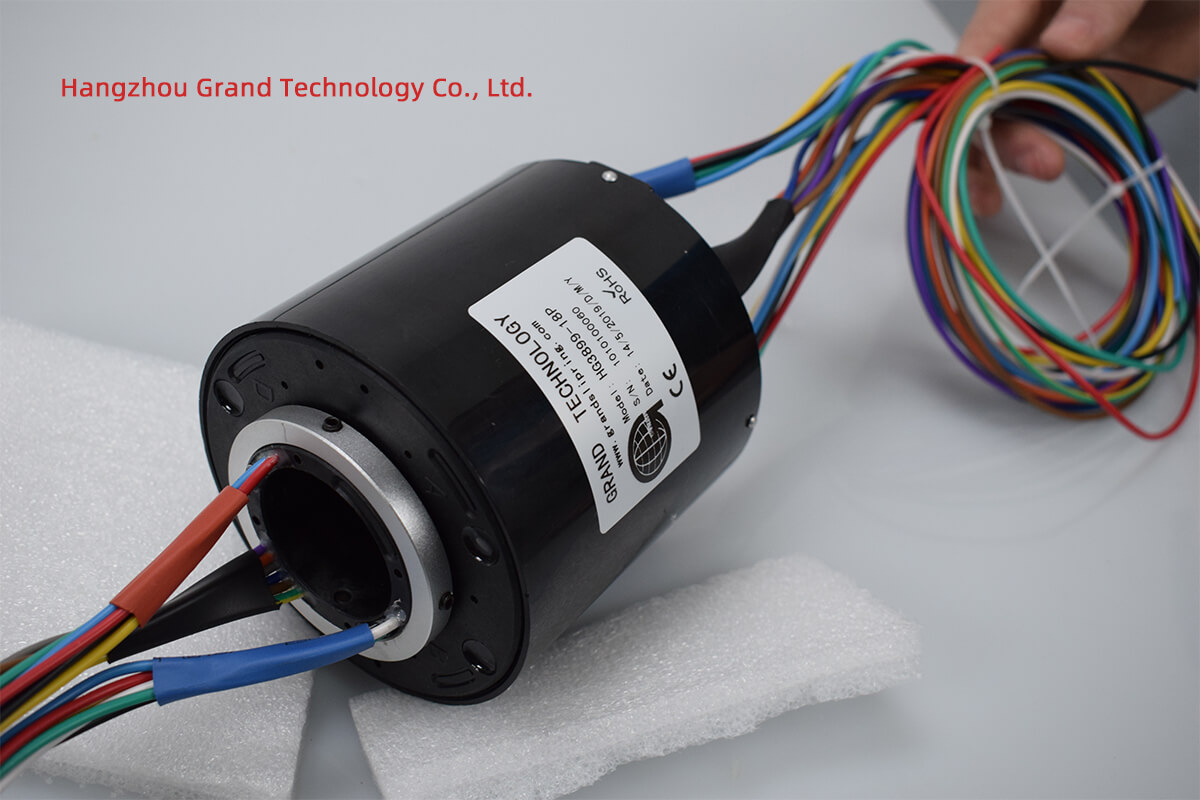Slip ring connectors are an integral part of the construction machinery sector, enabling the reliable transmission of power, signals, and data between stationary and rotating components. In this article, we will explore the different types of slip ring connectors commonly used in construction machinery, compare their advantages and disadvantages, present real-life case studies to showcase their effectiveness and provide guidelines for choosing the most suitable slip ring connector for specific construction machinery requirements.
Types of Slip Ring Connectors
1. Pancake Slip Ring Connectors: These compact slip ring connectors feature a flat, disc-like design. They are ideal for applications with limited space, as they provide a high number of electrical connections in a small form factor. Pancake slip ring connectors offer low electrical noise and can handle high-speed rotations.
2. Through-Bore Slip Ring Connectors: Through-bore slip ring connectors feature a hollow center, allowing cables, shafts, or other components to pass through the center of the connector. This design enables easy integration and simplifies the routing of cables or fluids, making them suitable for construction machinery with rotating parts that require through-bore connectivity.
3. Mercury-wetted Slip Ring Connectors: These specialized slip ring connectors use mercury as the conductive medium, providing excellent electrical conductivity and low electrical noise. Mercury-wetted slip ring connectors are often used in precision applications where low electrical resistance is critical, such as in control systems for construction machinery.
4. Fiber Optic Slip Ring Connectors: Fiber optic slip ring connectors are specifically designed for transmitting optical signals between rotating and stationary parts. They provide reliable, high-speed data transmission and are commonly used in construction machinery that requires the transfer of large amounts of data, such as remote sensing or monitoring systems.
Advantages and Disadvantages
Each type of slip ring connector has its own advantages and disadvantages, which must be considered when selecting the most suitable option for construction machinery applications.
– Pancake Slip Ring Connectors offer compact size, high contact density, and low electrical noise. However, they may have limitations in handling high current loads and require careful attention to brush maintenance.
– Through-Bore Slip Ring Connectors provide easy integration and the ability to pass cables or components through the center of the connector. However, they may have larger dimensions and may not be suitable for applications with space constraints.
– Mercury-wetted Slip Ring Connectors offer excellent electrical conductivity and low electrical resistance. Nevertheless, they require careful handling due to the use of mercury and may have limited availability in certain regions.
– Fiber Optic Slip Ring Connectors enable high-speed data transmission and immunity to electromagnetic interference. However, they may be more expensive than other types of slip ring connectors and require specialized knowledge for installation and maintenance.
Case Studies
Real-life case studies illustrate the effectiveness of different slip ring connector types in construction machinery applications.
1. Case Study A: In a large-scale crane, pancake slip ring connectors were used to transmit power and control signals between the stationary base and rotating boom. The compact design of the pancake slip ring connector allowed for easy integration while maintaining reliable electrical connections, enabling precise control of the crane’s movements.
2. Case Study B: Through-bore slip ring connectors were employed in a tunnel boring machine to pass power and data cables through the rotating cutting head. This facilitated uninterrupted communication between the control system and various sensors, ensuring efficient tunnel excavation.
Considerations for Choosing
When selecting a slip ring connector for construction machinery, several considerations should be taken into account:
– Electrical Requirements: Determine the required current capacity, voltage rating, and signal specifications to ensure the slip ring connector can handle the electrical demands of the machinery.
– Environmental Factors: Consider the operating conditions of the construction machinery, such as temperature extremes, humidity, dust, or vibrations, and choose a slip ring connector with suitable environmental protection ratings.
– Maintenance: Evaluate the maintenance requirements of the chosen slip ring connector type, considering factors such as brush replacement, lubrication, and longevity.
– Cost: Assess the budget constraints and balance the cost-effectiveness of different slip ring connector options while considering the specific needs of the construction machinery.
Slip ring connectors play a vital role in construction machinery, enabling the seamless transmission of power, signals, and data between stationary and rotating parts. By understanding the various types of slip ring connectors available, comparing their advantages and disadvantages, studying real-life case studies, and considering essential factors when choosing a slip ring connector, construction machinery professionals can make informed decisions to ensure the reliable and efficient operation of their equipment. Selecting the appropriate slip ring connector will enhance the performance, durability, and overall functionality of construction machinery in diverse applications.
See What We Can Do

